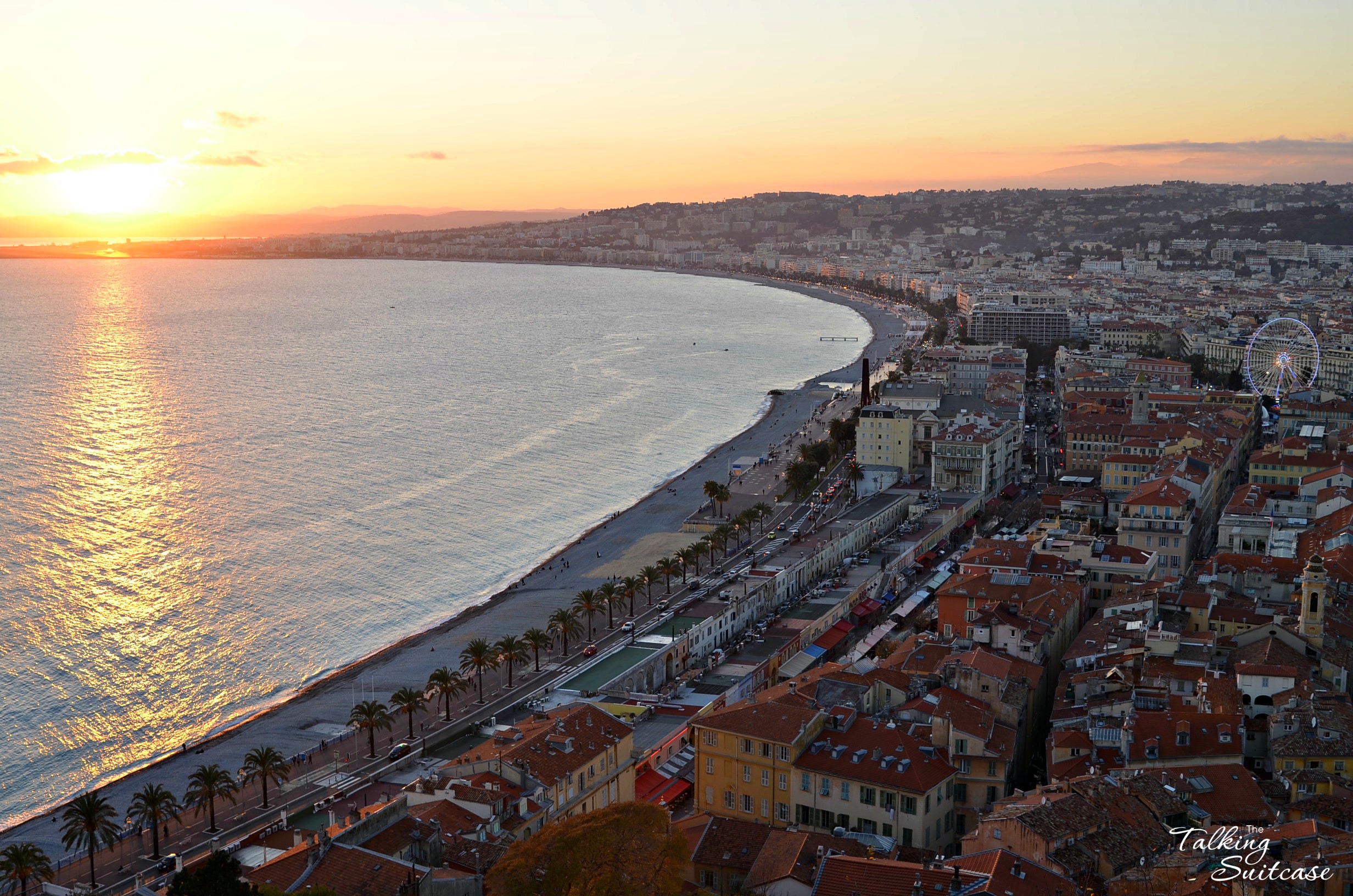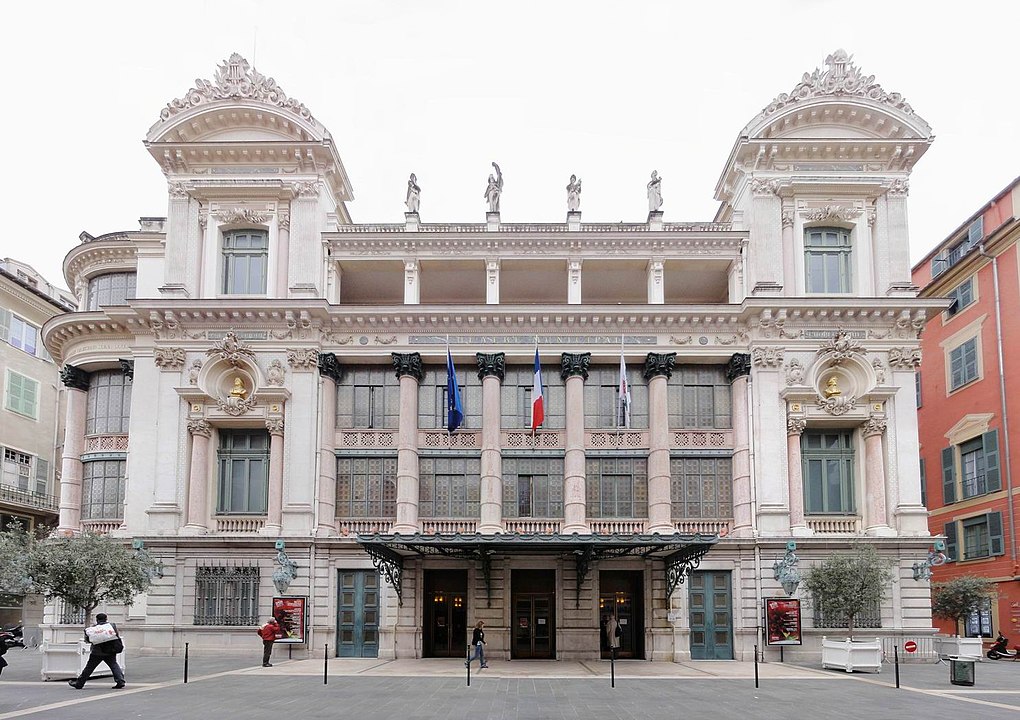Nice is the seventh most populous urban area in France and the capital of the Alpes-Maritimes department. Located in the French Riviera, on the south east coast of France on the Mediterranean Sea, at the foot of the Alps, Nice is the second-largest French city on the Mediterranean coast.
The city is nicknamed Nice la Belle (Nissa La Bella in Niçard), which means Nice the Beautiful, which is also the title of the unofficial anthem of Nice. The area of today’s Nice contains Terra Amata, an archaeological site which displays evidence of a very early use of fire 380,000 years ago.
| Country | France |
|---|---|
| Region | Provence-Alpes-Côte d’Azur |
| Department | Alpes-Maritimes |
| Arrondissement | Nice |
| Canton | Nice-1, 2, 3, 4, 5, 6, 7, 8 and 9 |
| Intercommunality | Métropole Nice Côte d’Azur |
| Government | |
| • Mayor (2017–21) | Christian Estrosi |
| Area1 | 71.92 km2 |
| Population (2014) | 343,895 |
| • Rank | 5th in France |
| • Density | 4,800/km2 |
| • Urban (2013) | 1,004,826 |
| Time zone | UTC+01:00 (CET) |
| • Summer (DST) | UTC+02:00 (CEST) |
Nice has the second largest hotel capacity in the country and it is one of its most visited cities, receiving 4 million tourists every year. It also has the third busiest airport in France.
There is a local dialect, le nissard, nissart, or niçard. It is a variety of the regional language, Occitan. It is Italian in style, reminding that the area has been under different sovereignty in the past.
Architecture
In the second half of the 18th century, many wealthy English people took to spending the winter in Nice. This early aristocratic English colony conceived the building of a promenade with the leadership and financial support of Rev. Lewis Way. The Promenade des Anglais (“Promenade of the English”) is a promenade along the Baie des Anges (“Bay of the Angels”), which is a bay of the Mediterranean in Nice. The first houses were located on higher ground well away from the sea, and areas close to the water were home to Nice’s dockworkers and fishermen.
Another place worth mentioning is the small street parallel to the Promenade des Anglais, leading from Nice’s downtown, beginning at Place Masséna and running parallel to the promenade in the direction of the airport for a short distance of about 4 blocks. This section of the city is referred to as the “Zone Pietonne”, or “Pedestrian Zone”. Cars are not allowed (with exception to delivery trucks), making this avenue a popular walkway.
Old Nice is also home to the Opéra de Nice. It was constructed at the end of the 19th century under the design of François Aune, to replace King Charles Félix’s Maccarani Theater. Today, it is open to the public and provides a regular program of performances.
Economy and tourism
Nice is the seat of the Chambre de commerce et d’industrie Nice Côte d’Azur, which manages the Port of Nice. Investors from France and abroad can benefit from the assistance of the Côte d’Azur Economic Development Agency Team Côte d’Azur.
Nice has one conference centre: the Palais des Congrès Acropolis. The city also has several business parks, including l’Arenas, Nice the Plain, Nice Méridia, Saint Isidore, and the Northern Forum.
In addition, the city features several shopping centres such as Nicetoile, Nice TNL, Nice Lingostière, Northern Forum, St-Isidore, the Trinity, Cap3000 in Saint-Laurent-du-Var and Polygone Riviera in Cagnes-sur-Mer.
Sophia Antipolis is a technology park northwest of Antibes. Much of the park is within the commune of Valbonne. Established between 1970 and 1984, it primarily houses companies in the fields of computing, electronics, pharmacology and biotechnology. Several institutions of higher learning are also located here, along with the European headquarters of W3C.
Transport
Port
The main port of Nice is also known as Lympia port. This name comes from the Lympia spring which fed a small lake in a marshy zone where work on the port was started in 1745. Today this is the principal harbour installation of Nice – there is also a small port in the Carras district. Nice, being the point of continental France nearest to Corsica, has ferry connections with the island developed with the arrival of NGV (navires à grande vitesse) or high-speed craft.
Airport
Nice Côte d’Azur Airport is the third busiest airport in France after Charles de Gaulle Airport and Orly Airport, both near Paris. Due to its proximity to the Principality of Monaco, it also serves as that city–state’s airport. A helicopter service provided by Heli Air Monaco and Monacair links the city and airport.
Rail
The main railway station is Nice-Ville, served both by high speed TGV trains connecting Paris and Nice in less than 6 hours and by local commuter TER services. Marseille is reached in 2.5 hours. Nice also has international connections to Italy, Switzerland, Belgium, and Russia.
Tram
Tramway de Nice began operating horse-drawn trams in 1879. The replacement of trams with trolleybuses began in 1948 and was completed in 1953.
In 2007, the new Tramway de Nice linked the northern and eastern suburbs via the city centre. Two other lines are currently under construction and partly operating. The second line runs east–west from Jean Médecin to the Nice Côte d’Azur Airport, while the third line will provide a connection to the future TGV Nice Saint-Augustin and to Lingostière railway station. A fourth line is set to run from the future TGV Nice Saint-Augustin to Cagnes-sur-Mer.
Road
The A8 autoroute and the Route nationale 7 pass through the Nice agglomeration.
Sports
- The city’s major football club is OGC Nice. They play in Ligue 1 (the top division in France).
- The Olympic Nice swimming club is also notable; Camille Muffat and Yannick Agnel used to train there for example.
- Nice hosts the finish of the annual cycling race Paris–Nice.
- The Nice Hockey Élite club play in Ligue Magnus, the top men’s division of the French ice hockey pyramid.
- The Stade Niçois is a rugby club playing in Fédérale 1.
Culture
Terra-Amata, an archaeological site dating from the Lower Palaeolithic age, is situated near Nice. Nice itself was established by the ancient Greeks. There was also an independent Roman city, Cemenelum, near Nice, where the hill of Cimiez is located. It is an archaeological site with treasures, of which only a small part has been excavated. The excavated site includes thermal baths, arenas and Roman road.
Since the 2nd century AD, the light of the city has attracted painters and sculptors such as Chagall, Matisse, Niki de Saint Phalle, Klein, Arman and Sosno. Nice inspired many composers and intellectuals in different countries e.g. Berlioz, Rossini, Nietzsche, etc.
Nice also has numerous museums of all kinds: Musée Marc Chagall, Musée Matisse (arenas of Cimiez containing Roman ruins), Musée des Beaux-Arts, Musée international d’Art naïf Anatole Jakovsky, Musée Terra-Amata, Museum of Asian Art, Musée d’art moderne et d’art contemporain which devotes much space to the well-known École of Nice ”), Museum of Natural History, Musée Masséna, Naval Museum and Galerie des Ponchettes.
Being a vacation resort, Nice hosts many festivals throughout the year, such as the Nice Carnival and the Nice Jazz Festival. Traditions are still alive, especially in folk music and dances, including the farandole – an open-chain community dance.
Cusine
Nice has a few local dishes. There is a local tart made with onions and anchovies (or anchovy paste), named “Pissaladière“. Socca is a type of pancake made from chickpea flour. Farcis niçois is a dish made from vegetables stuffed with a mixture of breadcrumbs, meat (generally sausage and ground beef), and herbs; and salade niçoise is a tomato salad with green peppers of the “Corne” variety, baked eggs, tuna or anchovies, and olives.
Local meat comes from neighbouring valleys, such as the sheep of Sisteron. Local fish, such as mullets, bream, sea urchins, and anchovies (alevins) are used to a great extent, so much so that it has given birth to a proverb: “fish are born in the sea and die in oil”.





